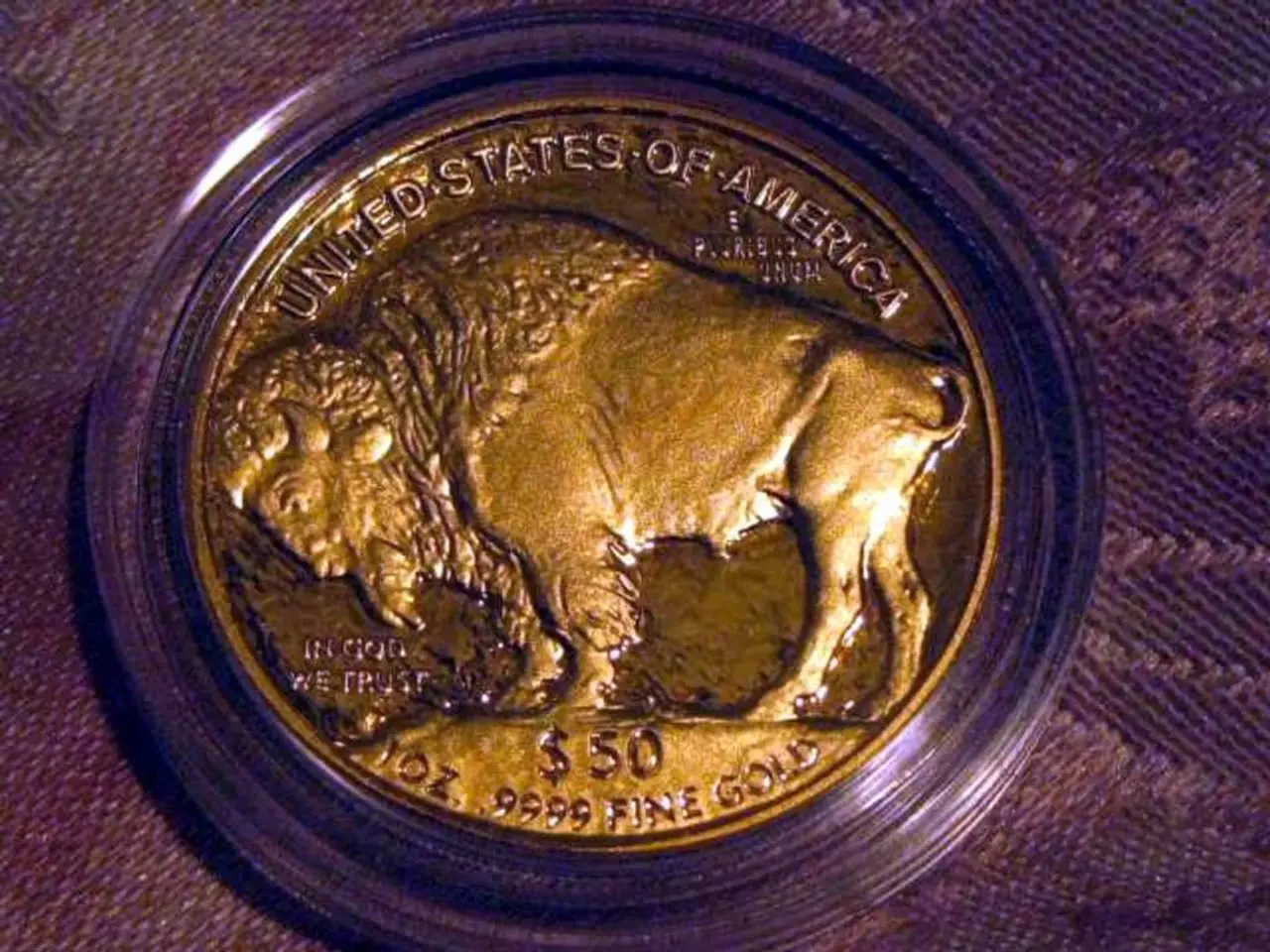Signs indicating potential struggle ahead for the U.S. currency?
The U.S. dollar continues to maintain its dominant position in global finance, despite growing discussions about potential alternatives. Several contenders have emerged, including the Chinese renminbi (RMB), the euro, gold, digital currencies, and even joint currency frameworks proposed by BRICS countries. However, none have managed to successfully challenge the dollar's hegemony due to various economic, political, and structural limitations.
China's currency, the RMB, has seen a rise in importance since its inclusion in the IMF's Special Drawing Rights (SDR) basket in 2016. It is used in about 50% of intra-BRICS trade, yet its global share of reserves remains low at around 2%. Geopolitical tensions, capital controls, and limited convertibility hinder the RMB's potential as a neutral global reserve currency.
The euro, the second most held reserve currency globally, boasts a 20% share of foreign exchange reserves. The European Union's large economy and strong financial markets make the euro a viable alternative. However, the lack of a unified fiscal policy, common treasury, and bond market reduces its effectiveness in fully replacing the dollar.
Gold, traditionally viewed as a safe haven asset, is increasingly being used by central banks to diversify reserves amid uncertainty over dollar stability. Although gold cannot serve as a transactional currency, it provides a hedge against currency volatility.
Digital currencies and central bank digital currencies (CBDCs) are gaining traction, with China's e-CNY and the European Central Bank's digital euro being prime examples. These innovations enable faster, cheaper cross-border payments and may reduce reliance on the dollar system through distributed ledger technologies. However, the ecosystem is still in its infancy, and the full impact on dollar dominance remains uncertain.
BRICS countries have considered joint currency frameworks or payments systems to reduce dollar dependence, but due to the lack of strong central banks and coordinated monetary policies within BRICS, a unified BRICS currency is not currently feasible.
Despite the emergence of potential alternatives, the U.S. dollar remains the dominant currency in global finance, with no immediate successor capable of fully replacing it. The future may see a more multi-polar currency world supported by a mix of traditional and digital currencies rather than a single dominant currency.
Survey data from UBS shows that 47% of reserve managers fear a deterioration in the quality and independence of US economic data, and 29% are concerned about potential restrictions to capital market openness. Meanwhile, 74% of the surveyed reserve managers believe the euro will benefit from global macroeconomic and geopolitical shifts over the next five years.
Japan and Europe are emerging as potential alternatives to the U.S., with Japan's appeal growing due to a weaker yen, shifting geostrategic dynamics, and a more confident domestic leadership. Europe's potential rise is contingent on meaningful institutional reform.
However, for any safe asset to rival US Treasuries, it must be built on a foundation of fiscal responsibility, credible repayment mechanisms, and clearly defined rules. The debate is no longer about whether a European safe asset is needed but whether the European Union is prepared to deliver one - and on what terms.
The focus is shifting towards managing the risks around the dollar more deliberately and being prepared for what might come next, but this doesn't mean abandoning the dollar. Gold has reclaimed its role as a core reserve asset, not tied to any single sovereign and increasingly viewed by central banks as a reliable hedge against volatility and geopolitical risk.
In conclusion, while the U.S. dollar's dominance in global finance is facing challenges, it remains uncontested. The future may bring a more multi-polar currency world, but the dollar's position is likely to remain strong for the foreseeable future.
- China's currency, the RMB, has a growing significance in global finance, but its limited convertibility, geopolitical tensions, and capital controls hinder its potential as a global reserve currency.
- The euro, with a 20% share of foreign exchange reserves, could be a viable alternative due to the European Union's large economy and strong financial markets, but the lack of a unified fiscal policy, common treasury, and bond market reduces its effectiveness.
- Gold, a traditional safe haven asset, is increasingly being used by central banks to diversify reserves amid uncertainty over dollar stability, providing a hedge against currency volatility.
- Digital currencies and central bank digital currencies (CBDCs) are gaining traction, with their potential to enable faster, cheaper cross-border payments reducing reliance on the existing dollar system. However, the full impact on dollar dominance remains uncertain.
- BRICS countries have considered joint currency frameworks, but due to the lack of strong central banks and coordinated monetary policies, a unified BRICS currency is not currently feasible.
- UBS survey data shows that 47% of reserve managers fear a deterioration in the quality and independence of US economic data, and 29% are concerned about potential restrictions to capital market openness, while 74% believe the euro will benefit from global shifts over the next five years.
- For any safe asset to rival US Treasuries, it must be built on a foundation of fiscal responsibility, credible repayment mechanisms, and clearly defined rules, with the debate shifting towards managing risks around the dollar and being prepared for the future, while gold has reclaimed its role as a core reserve asset.




